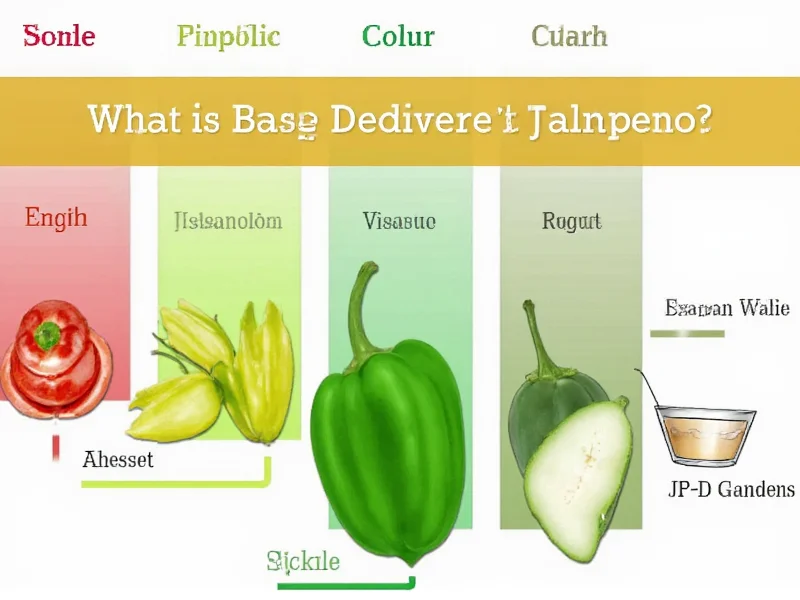Understanding exactly where jalapeños fall on the Scoville scale helps home cooks, food enthusiasts, and pepper growers make informed decisions about their culinary creations and gardening choices. This precise measurement system provides valuable context for what to expect when working with these popular peppers.
What the Scoville Scale Really Measures
The Scoville scale, developed by pharmacist Wilbur Scoville in 1912, measures the concentration of capsaicinoids—the chemical compounds responsible for the burning sensation we perceive as “heat” in chili peppers. Originally determined through human taste testing, modern laboratories now use high-performance liquid chromatography (HPLC) for precise measurements, though results are still converted to Scoville Heat Units for public understanding.
Understanding Jalapeño's Heat Range
While the standard range for jalapeños is 2,500-8,000 SHU, several factors influence where an individual pepper falls within this spectrum:
- Growing conditions: Soil quality, water stress, and sunlight exposure significantly impact heat levels
- Maturity: Riper (redder) jalapeños often develop more capsaicin
- Genetic variation: Different cultivars produce varying heat levels
- Part of the pepper: The placenta (white ribs) contains the highest concentration of capsaicin
| Pepper Variety | Scoville Heat Units | Heat Comparison |
|---|---|---|
| Jalapeño | 2,500-8,000 SHU | Moderate heat, edible for most people |
| Serrano | 10,000-23,000 SHU | 2-3 times hotter than jalapeño |
| Habanero | 100,000-350,000 SHU | 15-40 times hotter than jalapeño |
| Bell Pepper | 0 SHU | No heat |
Practical Implications of Jalapeño Heat Levels
Knowing that jalapeños measure between 2,500-8,000 Scoville units provides practical guidance for everyday cooking. This moderate heat level makes them versatile for various culinary applications without overwhelming most palates. When handling jalapeños, remember that the highest concentration of capsaicin resides in the white pith and seeds. Removing these parts significantly reduces the perceived heat while maintaining the distinctive jalapeño flavor.
Chefs and home cooks can leverage this knowledge when substituting peppers in recipes. For example, if a recipe calls for jalapeños but you prefer milder heat, consider using poblano peppers (1,000-2,000 SHU) instead. Conversely, for more heat while maintaining similar flavor profiles, serrano peppers would be an appropriate substitute.
Why Jalapeño Heat Varies So Widely
The substantial range in jalapeño heat—from 2,500 to 8,000 Scoville units—stems from both environmental and biological factors. Peppers grown under water stress often develop higher capsaicin concentrations as a natural defense mechanism. Similarly, soil composition, particularly nitrogen levels, affects heat production. The specific cultivar matters too; some jalapeño varieties like 'Early Jalapeño' tend toward the milder end, while 'TAM Mild Jalapeño' has been specifically bred for consistent low heat.
Interestingly, the same jalapeño plant can produce peppers with varying heat levels throughout the growing season. Early harvests often yield milder peppers, while those harvested later in the season typically develop more heat. This natural variation explains why one jalapeño in your grocery store might barely tingle your tongue while another from the same batch delivers a noticeable kick.
Measuring Heat Beyond the Scoville Scale
While the Scoville scale remains the standard reference for pepper heat, food scientists now use ASTA pungency units for more precise commercial measurements. One ASTA unit equals approximately 15 Scoville units. This more technical measurement helps food manufacturers maintain consistent heat levels in products like hot sauces and salsas that use jalapeños as primary ingredients.
For home cooks wondering how hot are jalapeno peppers compared to other common varieties, the answer lies in understanding that even within the same pepper type, natural variation occurs. This explains why recipes often specify “2-3 jalapeños, seeded” rather than providing exact measurements—the heat can vary significantly from pepper to pepper.
Working Safely with Jalapeños
Understanding that jalapeños measure 2,500-8,000 on the Scoville heat scale helps determine appropriate handling techniques. While not extremely hot, the capsaicin in jalapeños can still cause skin irritation and eye discomfort. Always wash hands thoroughly after handling, and consider wearing gloves when working with multiple peppers or if you have sensitive skin. Never touch your face while preparing jalapeños, and remember that cooking doesn't eliminate capsaicin—it merely distributes it throughout the dish.











 浙公网安备
33010002000092号
浙公网安备
33010002000092号 浙B2-20120091-4
浙B2-20120091-4